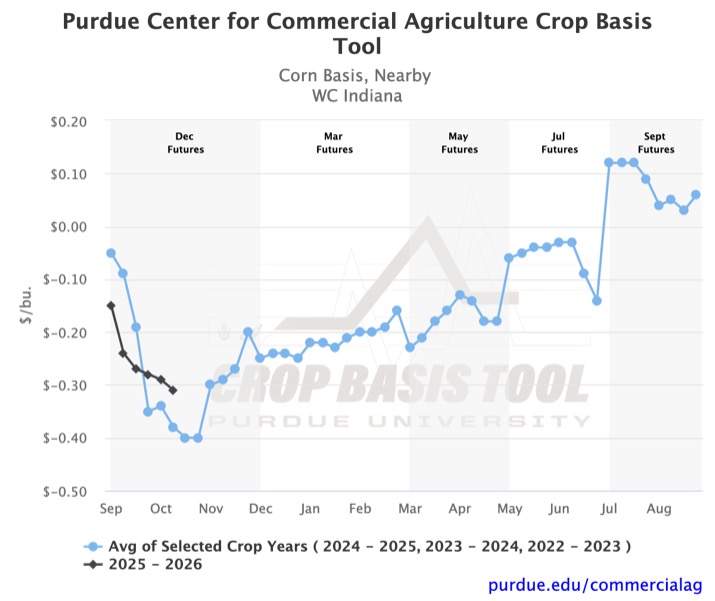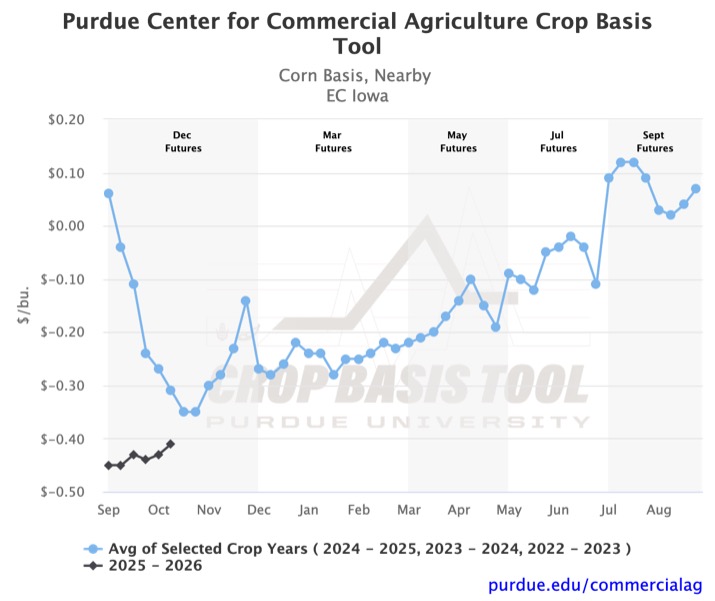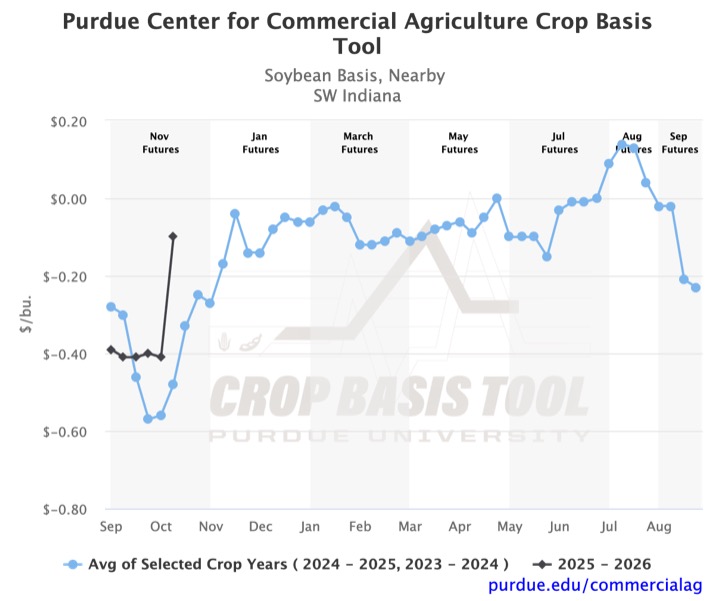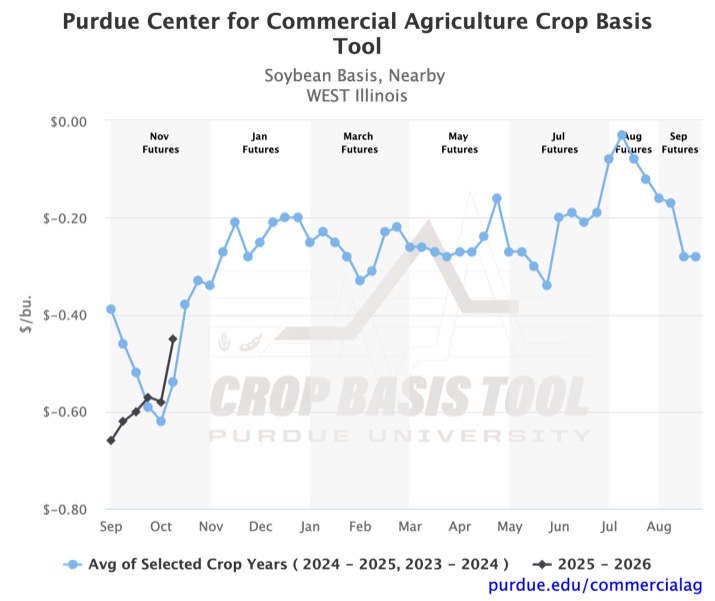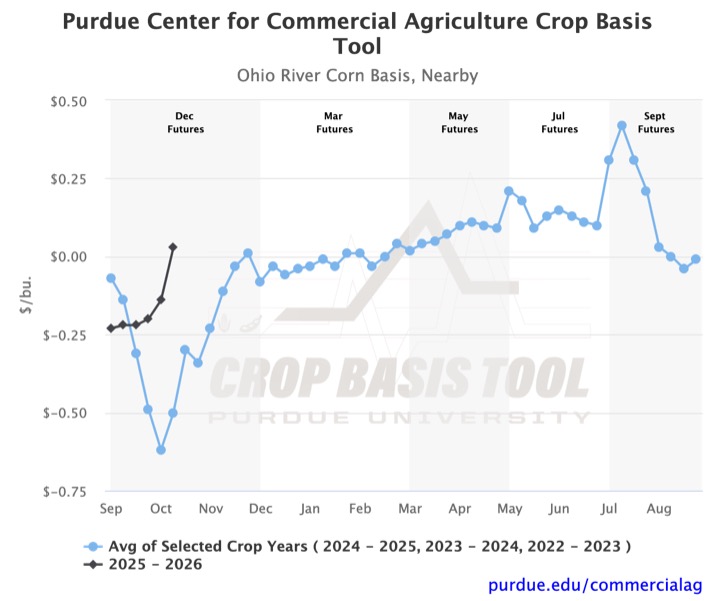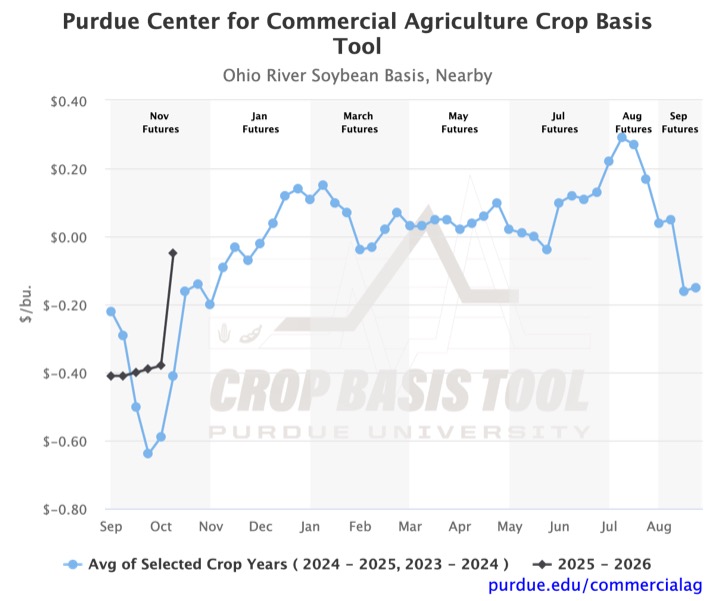October 9, 2025
Corn & Soybean Basis Outpace Historical Averages across the Eastern Corn Belt
by Josh Strine
As corn and soybean harvest progress across the country, recent basis movements have pushed nearby basis levels above their historical averages in much of the Eastern Corn Belt. Typically, basis weakens through harvest, with nearby basis levels often bottoming out between mid-October and November. This marketing year, however, corn and soybean basis began below the two- and three-year averages, respectively, and recent movement has flipped the relationship in many USDA crop reporting districts.
Figure 1 depicts West-Central Indiana’s nearby corn basis through the second week of October. Although the 2025 – 2026 marketing year started with a weaker basis than the three-year average, the typical seasonal decline has been more gradual. As a result, the $0.10/bu deficit to the trend line in early September has turned into a $0.07/bu surplus over the trend line by mid-October. While many markets in Illinois, Indiana, Ohio, and Michigan have seen basis surpass the historical average, the change is less prevalent in Iowa. East-Central Iowa may be the most extreme case where nearby corn basis has remained at a five-year low for the past six weeks (Figure 2).
Soybean basis strengthening has been even more pronounced across portions of the Eastern Corn Belt. Figures 3 and 4 show the nearby soybean basis in Southwest Indiana and Western Illinois, respectively. In Southwest Indiana, basis increased by $0.31/bu between the first and second week of October. In West Illinois, basis increased by $0.13/bu between the first and second week of October. Similar but milder trends can be seen across the region.
Many different factors may be driving the basis strengthening across the region. Both corn and soybean harvests are lagging behind the 2024 harvest. Additionally, basis along the Ohio River is well above the historical average for both crops (Figures 5 and 6). Strong river basis may signal increased export demand, as grain moved on barges is often destined for the Gulf for export. While the Crop Basis Tool does not include Mississippi River basis, basis strengthening in Eastern Iowa and Western Illinois may be further evidence of increased export demand.
As harvest continues into November, historical trends would suggest that basis across the region should continue to increase. However, if this year’s early upturn is tied to a slow harvest, further gains may be limited. Expectations may also be reduced in the short run in areas where the 2025 – 2026 basis level has surpassed the historical average. To see where your local basis sits, you can visit the Purdue Center for Commercial Agriculture’s Crop Basis Tool.
TAGS:
TEAM LINKS:
RELATED RESOURCES
UPCOMING EVENTS
December 1 & 8, 2025
Join Purdue Extension for a two-part workshop designed to help you gain a clearer understanding of tax planning essentials. The first session on December 1 will focus on the fundamentals of farm taxes, with particular emphasis on strategies that can be used in a low net income year. The second session on December 8 will focus on key tax strategies and will allow plenty of time for questions. Registration cost is only $20.
Read MoreDecember 15, 2025
This program provides in-depth coverage of agricultural and farm tax issues. In addition to covering timely tax issues, we will cover disaster tax issues, depreciation and expensing farm assets, retirement planning for farms, and tax planning in low-income years. This year’s webinar will be co-taught by a team from Ohio State and Purdue Universities.
Read MoreJanuary 27 or 28, 2026
Farm Shield is more than a conference, it’s a commitment to helping agricultural families build resilience and plan for a secure future. Don’t miss this opportunity to protect your legacy!
Read More